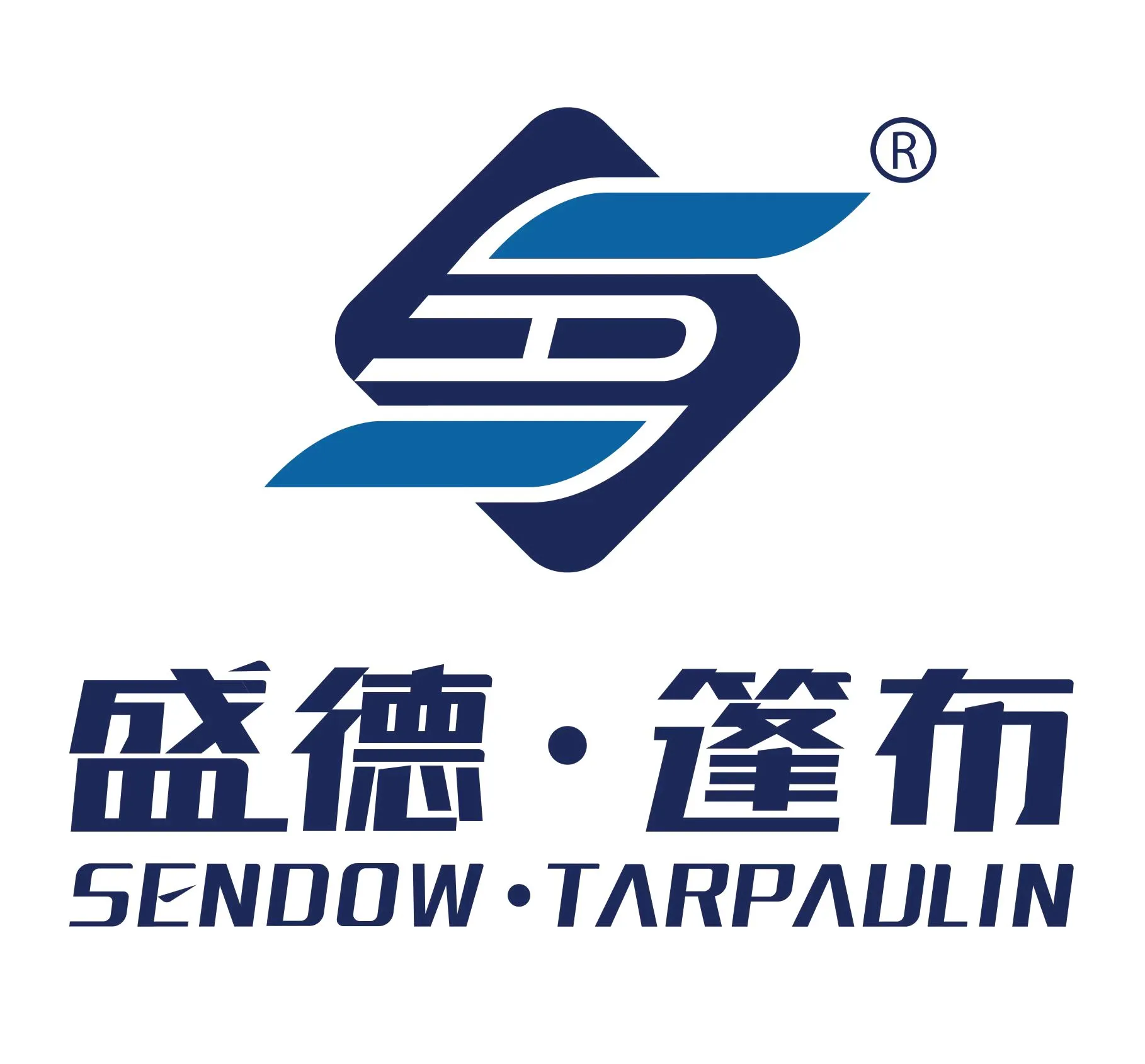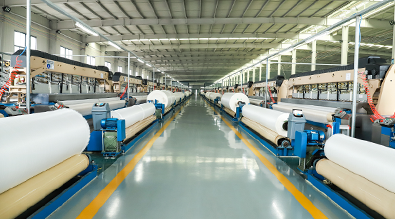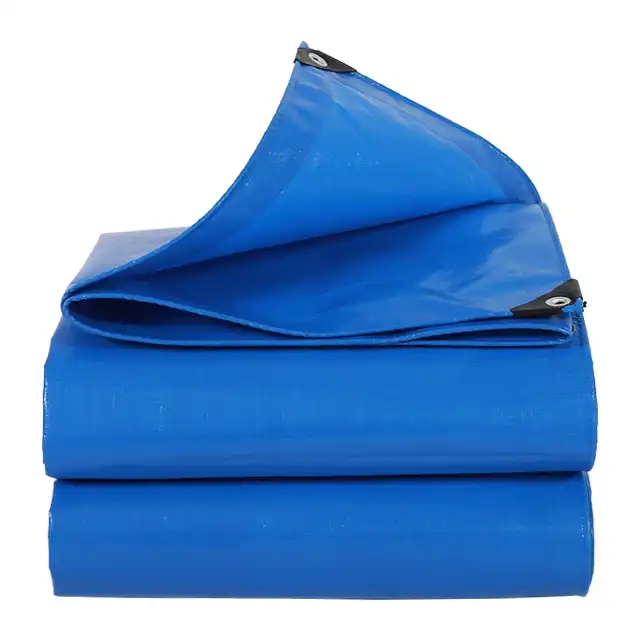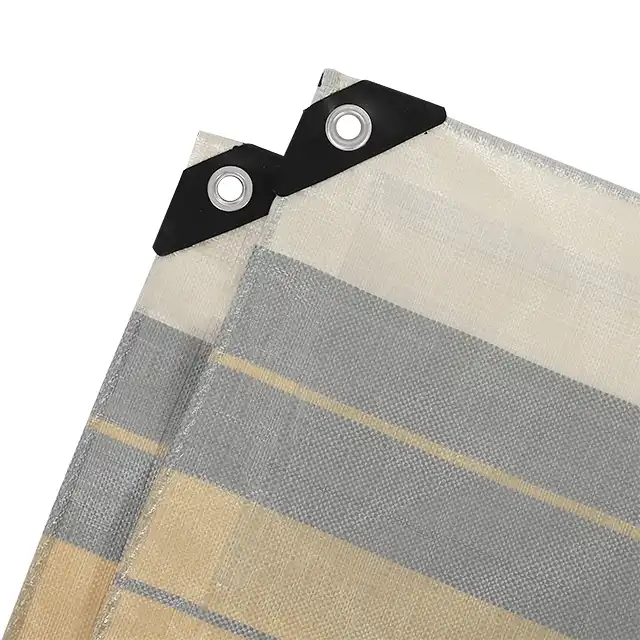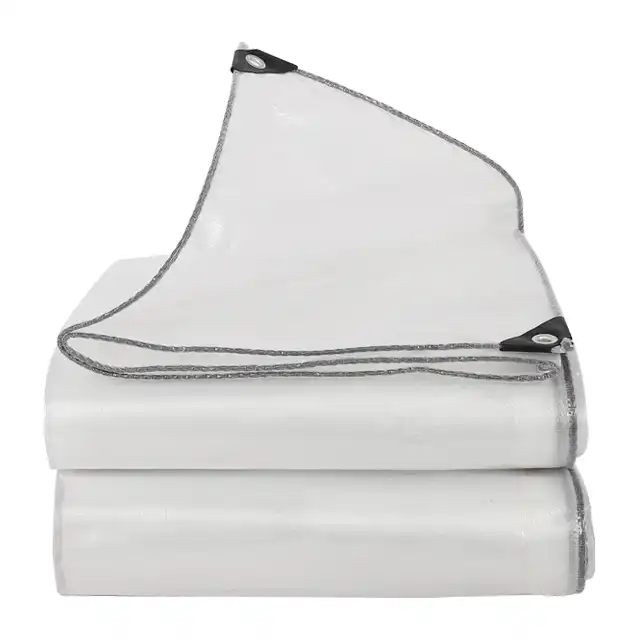Comparing PE and PVC Tarpaulin Materials for Storage Shelters: Which Is the Best Choice
When it comes to selecting the ideal material for storage shelters, the choice between Polyethylene (PE) and Polyvinyl Chloride (PVC) tarpaulins can significantly impact durability, performance, and overall protection. Waterproof pe tarpaulin stands out as a versatile solution that offers exceptional characteristics for various storage applications, providing robust protection against environmental challenges while maintaining cost-effectiveness and adaptability across multiple industries.

Understanding Material Characteristics: A Comprehensive Analysis
Structural Composition and Manufacturing Process
Polyethylene tarpaulins represent a marvel of modern material engineering, crafted through a sophisticated process that combines high-density polyethylene (HDPE) woven fabric with low-density polyethylene (LDPE) coating. This intricate manufacturing approach ensures that waterproof pe tarpaulin products achieve optimal performance characteristics. The production begins with precise yarn extrusion, utilizing advanced high-tech extruding machines capable of creating yarn thicknesses ranging from 400D to 2500D. The weaving process employs state-of-the-art water-jet looms, including unique 5m and 4m width fabric weaving machines imported from Korea. These automated systems enable the creation of seamless fabric widths ranging from 1.5m to 5m, eliminating potential weak points in the material. Professional technicians meticulously control the coating process, ensuring uniform application and superior waterproofing capabilities. Each tarpaulin undergoes rigorous quality control measures, with more than 600 skilled workers dedicated to maintaining exceptional standards. The coating process involves sophisticated machinery, including 4 large fabric coating units that apply protective layers with precision. This comprehensive approach guarantees that every waterproof pe tarpaulin meets stringent quality requirements.
Performance Metrics and Environmental Adaptability
Performance evaluation of tarpaulin materials reveals compelling advantages for polyethylene-based solutions. Waterproof pe tarpaulin demonstrates remarkable resistance to diverse environmental challenges, offering comprehensive protection across multiple scenarios. The material exhibits outstanding characteristics including 100% waterproofing, exceptional tear resistance, and advanced UV treatment. The technological innovations embedded in these tarpaulins enable remarkable flexibility across extreme temperature ranges. Arctic flexibility ensures the material remains functional in challenging cold environments, while simultaneously providing robust protection against ultraviolet degradation. The UV treatment, ranging from 1% to 7%, helps prevent material breakdown and maintains structural integrity during prolonged exposure.
Key performance metrics include:
- Weight range: 65gsm to 280gsm
- Thickness: 0.1mm to 0.2mm
- Mesh count: 10x10 to 14x14
- Color customization: Available in any desired color
- Temperature resistance: Anti-freezing capabilities
- Chemical resistance: Anti-corrosion properties
Application Versatility and Industry Adaptations
Waterproof pe tarpaulin demonstrates extraordinary versatility, serving critical functions across numerous industries and applications. From agricultural protection to construction, transportation, and emergency response, these tarpaulins provide reliable solutions for diverse requirements.
Primary application domains include:
- Goods protection and packaging materials
- Transportation covers for trucks and vehicles
- Agricultural applications like greenhouse fabrics
- Aquaculture impermeable tarps
- Scaffolding protection
- Leisure and recreational equipment
- Emergency shelter solutions
Industrial partnerships with prestigious organizations like UNHCR, IOM, ICRC, and UNICEF underscore the material's reliability and performance. These collaborations validate the tarpaulin's ability to meet stringent international standards for protective covering in challenging environments.
Comparative Analysis: PE versus PVC Tarpaulin Materials
Durability and Structural Integrity
Polyethylene tarpaulins demonstrate superior durability compared to traditional PVC alternatives. The unique manufacturing process, combining HDPE woven fabric with LDPE coating, creates a robust material that withstands substantial mechanical stress. Unlike PVC, which can become brittle under extreme temperatures, PE maintains its structural integrity across diverse environmental conditions. The molecular structure of polyethylene allows for enhanced flexibility and resistance to environmental degradation. This characteristic ensures that waterproof pe tarpaulin maintains its protective properties even after prolonged exposure to sunlight, moisture, and temperature fluctuations. The material's shrink-proof nature further enhances its long-term performance and reliability.
Economic Considerations and Cost-Effectiveness
Economic analysis reveals significant advantages for polyethylene tarpaulins. The manufacturing process enables production of lightweight yet durable materials, reducing transportation and storage costs. With weights ranging from 65gsm to 280gsm, manufacturers can provide tailored solutions that balance protection and economic efficiency. The longevity of waterproof pe tarpaulin translates into reduced replacement frequency, offering substantial long-term savings. Advanced coating technologies and precise manufacturing techniques ensure that these tarpaulins maintain their protective qualities over extended periods, representing a cost-effective investment for businesses and organizations.
Ecological and Sustainability Factors
Environmental considerations increasingly drive material selection processes. Polyethylene tarpaulins demonstrate notable sustainability advantages, offering recyclability and reduced environmental impact compared to PVC alternatives. The production process focuses on minimizing waste and maximizing material efficiency. Manufacturers like Linyi Shengde Plastic Co., Ltd prioritize ecological responsibility, implementing advanced recycling and waste reduction strategies. The ability to customize tarpaulin specifications reduces unnecessary material consumption, further enhancing the product's environmental credentials.
Innovative Manufacturing Techniques in Tarpaulin Production
Advanced Material Extrusion Technologies
Waterproof pe tarpaulin production begins with cutting-edge material extrusion technologies that transform raw polyethylene into high-performance protective materials. The extrusion process involves sophisticated machinery capable of precisely controlling yarn thickness and structural integrity. Manufacturers like Linyi Shengde Plastic Co., Ltd utilize over 30 high-tech extruding machines that can create yarn ranging from 400D to 2500D, ensuring exceptional quality and consistency in every waterproof pe tarpaulin produced.
Precision Weaving and Coating Techniques
The weaving stage represents a critical moment in tarpaulin manufacturing, where technological innovation meets material science. Specialized water-jet looms, particularly those imported from Korea, enable the creation of seamless fabric sheets up to 5 meters wide. These advanced machines allow for precise fabric construction, incorporating unique weaving patterns that enhance the waterproof pe tarpaulin's strength, flexibility, and protective capabilities. Professional technicians meticulously monitor each stage, ensuring optimal fabric density and uniform coating application.
Quality Control and Performance Validation
Rigorous quality control processes form the backbone of exceptional waterproof pe tarpaulin production. Manufacturers implement comprehensive testing protocols that examine multiple performance parameters, including tensile strength, water resistance, and environmental durability. Advanced testing equipment enables detailed analysis of material characteristics, with third-party laboratory certifications validating the exceptional quality of each produced tarpaulin. This meticulous approach ensures that every waterproof pe tarpaulin meets the highest international standards for protection and performance.
Conclusion
Waterproof pe tarpaulin emerges as the superior choice for storage shelters, offering unparalleled performance, versatility, and economic efficiency. Its advanced manufacturing process, comprehensive protective characteristics, and adaptability across diverse applications position it as the optimal solution for contemporary protective covering requirements. At Linyi Shengde Plastic Co., Ltd, we have dedicated two decades to perfecting our craft, continuously innovating and delivering high-quality tarpaulin solutions. Our commitment to excellence, backed by advanced research and development capabilities, ensures that we can meet and exceed your specific requirements. We invite you to explore the possibilities of our waterproof pe tarpaulin solutions. Our team stands ready to provide customized recommendations tailored to your unique needs. Contact us today at info@shengdetarp.com and discover how we can transform your storage and protection strategies.
References
1. Thompson, R. J. (2022). Advanced Polymer Engineering: Material Selection Strategies. Oxford University Press.
2. Chen, L. (2023). Industrial Textiles: Performance and Applications. Cambridge Manufacturing Review.
3. Rodriguez, M. (2021). Sustainable Material Science: Innovations in Protective Coverings. Springer Nature Publications.
4. Nakamura, K. (2022). Environmental Adaptability of Synthetic Materials. Tokyo Technical Press.
5. Singh, P. (2023). Protective Material Technologies: A Comprehensive Analysis. Wiley Engineering Series.
6. González, A. (2022). Industrial Textile Performance Metrics. Barcelona Research Institute Press.
